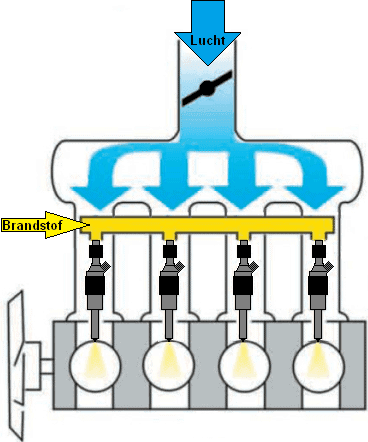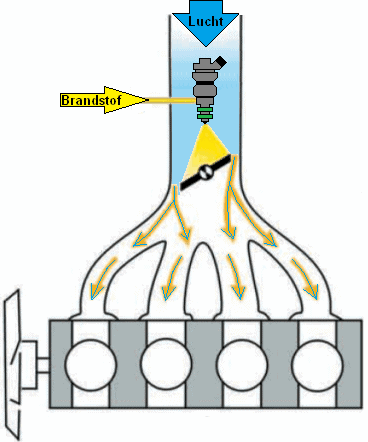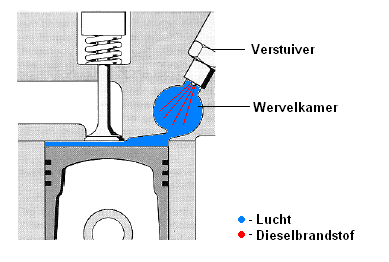Subjects:
- Direct and indirect injection in petrol engines
- Direct and indirect injection in diesel engines
Direct and indirect injection in petrol engines:
Direct Injection:
With direct injection (DI), the gasoline is injected directly into the combustion chamber instead of the inlet. With this technique, the petrol can be injected after the compression stroke has already started. In this way a better combustion can be obtained.

Indirect Injection:
With indirect injection (IDI), the gasoline is injected into the intake and sucked into the engine together with the air. Use can be made of one injector for all cylinders, or one injector can be provided for each cylinder. In the latter case, the power and emission reduction potential of the engine increases because the fuel injection can be optimally tuned per cylinder.

Direct and indirect injection in diesel engines:
Direct injection:
The injection pressure is higher with direct injection than with indirect injection. The fuel is injected directly into the cylinder (or the piston bottom formed for it) at the end of the compression stroke. The mixing therefore takes place in the cylinder and not in the swirl chamber as with indirect injection. In order to improve the mixture formation, the inlet air is swirled. The vortex is created by the shape of the intake manifold and the shape of the piston bottom.
A diesel engine with direct injection has the advantage over a diesel engine with indirect injection that the wall surface of the combustion chamber is smaller. As a result, a direct-injection diesel engine will have less loss of compression and combustion heat and will therefore have a higher efficiency and cleaner exhaust gases.

Indirect injection:
Indirect injection was most commonly used on older diesel engines. You hardly come across it these days. The fuel is injected, mixed and vaporized in the swirl chamber and not in the cylinder itself as with direct injection diesel engines. The fuel is injected into the swirling air of the swirl chamber during the compression stroke. In this way a good mixture of fuel with air is created.

Related pages:
